Bohlen-Pierce Scale: keyboards
Three types of keyboards will be discussed here:


This is Heinz Bohlen's original homemade electronic organ from 1972, in Gamma Mode. To the right, Heinz is tinkering with the transcription of a Christmas carol into his "13-Step Scale" (1973).
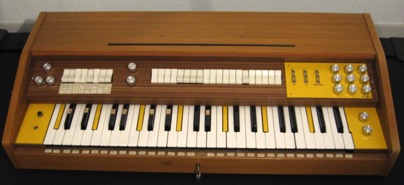
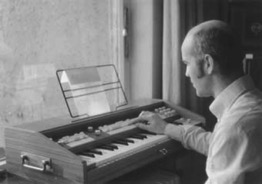
In 2000 when I was doing research in BP at NYU, the past research I had found all referred to Lambda as the main mode of choice, and not Gamma, the mode Heinz Bohlen's keyboard was using (or Dur II, which has the same black/white key pattern. At the time I did not know which mode Heinz's keyboard was referring to).
So at that time (2000) I drew out a Lambda keyboard and I liked the simplicity of it.


Ten years later I finally built a Lambda mode keyboard, and found it was a nightmare to play. Using black keys as white keys where there are 3 in a row made it even worse, because it was harder to see the 4-black-key groupings. As well, I first realized the issue of shaping the white keys. I had ordered extra C's and F's and shaved them narrower. By the way, I built this from Korg Poly-800, which I do NOT recommend for several reasons. I just happened to have one lying around.

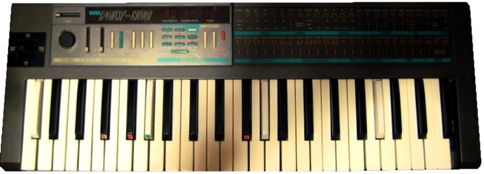
Below is a diagram of the same keyboard, to make it more clear how it was made. G# was painted white to become a Bohlen-Pierce E. The grey shaded keys – H, J, A, B – were shaved thinner in a symmetrical manner so that the black keys – H#, A# – are centered. The pattern – C, C#, D, E, F, F#, G – is the same keys and same widths as a normal 12 tone pattern of F, F#, G, G#, A, A#, B.

A Bohlen-Pierce Scale keyboard in Dur II Mode (or Gamma Mode, which looks the same) can be made with a similar method, but requires two white-painted black keys per tritave – E and A – instead of just E. I think that Dur II is easier to see and play since the pattern is more varied. The extra white-painted black keys results in a narrow tritave which is easy to reach.


The keyboards above can be made by modifying most store bought keyboards and ordering extra keys, but the downside is that they have unequal widths of white keys. In my opinion, this is OK for composing, but less than ideal for performance.
Another option – a Bohlen-Pierce Scale keyboard with equal spacing on top and equal spacing on bottom – does not work out very well either. In the picture below, the Cs are centered, but observe that other keys are not centered. No matter how they are aligned, some keys – like B and D – are inevitably shifted over one way or the other and not aligned with the top portion of the key. This would be less than ideal for performance as well. But if we insist on having equal widths on the top portion of the keys and on the bottom portion, some keys will not be centered, and in fact will be zig zagged.


This is the same keyboard without the lines:


One way to get around the hassle of sanding white keys narrower is to simply saw off the wide part of the keys. The black and white keys can then be freely interchanged. This isn't ideal either since pianists may miss the wide part of the white keys for doing glissandos, and generally are used to having the black keys shorter than the white keys. I do find it pleasant to perform on, however, in the form of a Vertical Keyboard, a patent pending invention that is currently for sale (see VerticalKeyboards.com).
Building a Bohlen-Pierce Scale Vertical Keyboard with short keys: 1 Video
BP-Tar (Lambda Mode)
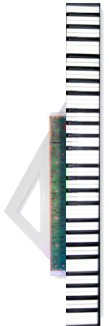

BP-Tar (Dur II Mode)
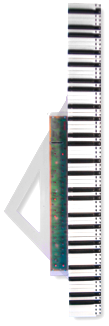

Another style of keyboard that is great for the Bohlen-Pierce Scale is the sonome ("sonome" is the generic name for this type of hexagon keyboard, like "piano"). Many useful chords in the Bohlen-Pierce Scale that are wide and hard to reach on a traditional style piano keyboard, are closer together and easy to reach on a sonome.
Bohlen-Pierce Scale, Lambda Mode
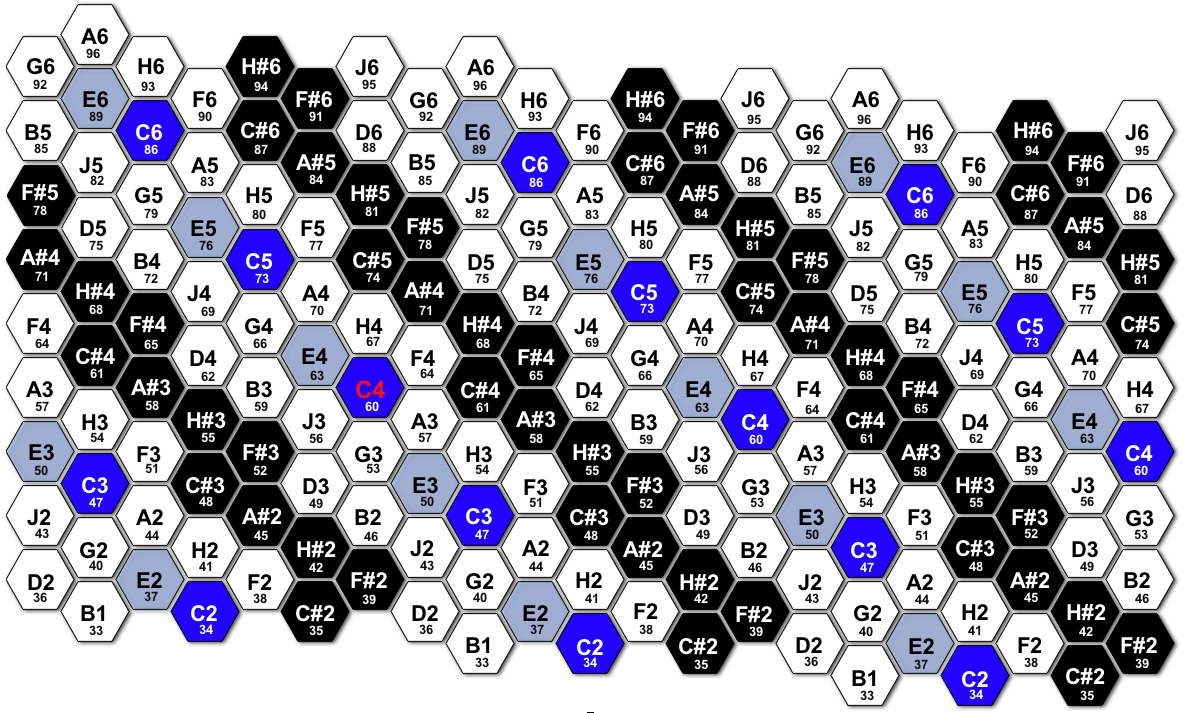
Lambda Mode (pictured above) is the mode of choice for most Bohlen-Pierce Scale fans. However, it's interesting that Dur II mode (created by simply moving the last accidental down one half step) is easier to see and play on both a traditional style piano keyboard and a sonome.
Bohlen-Pierce Scale, Dur II Mode:
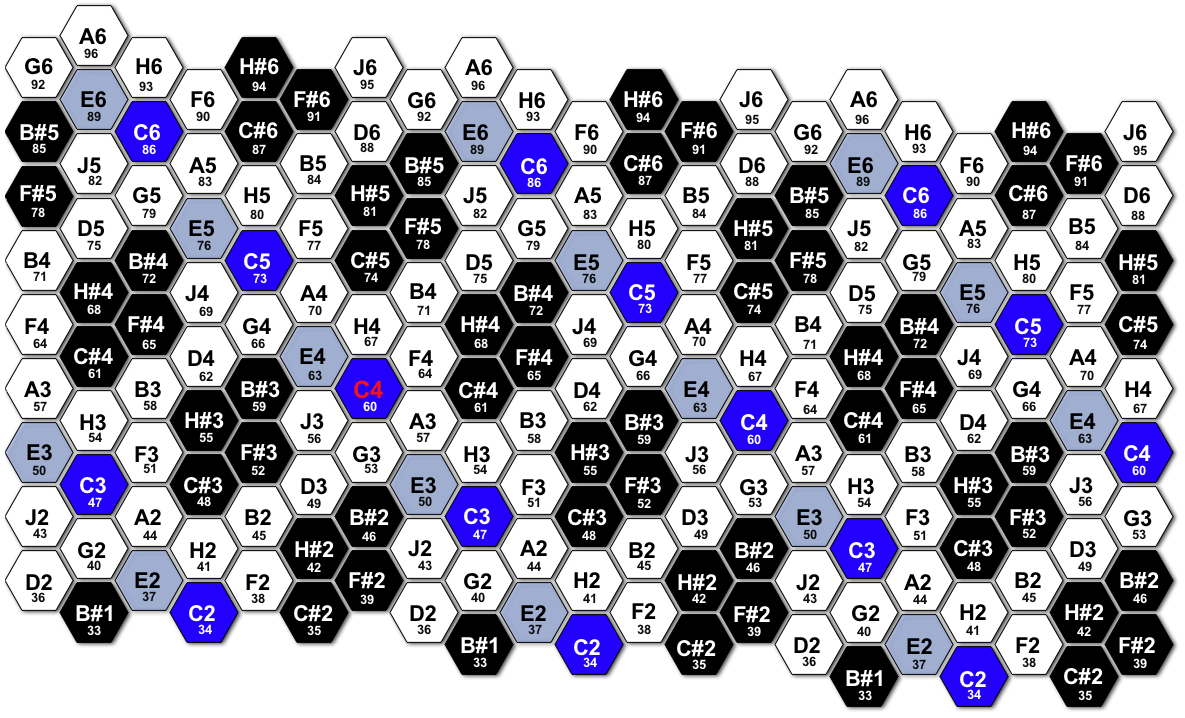
Bohlen-Pierce Scale, Lambda Mode

Lambda Mode (pictured above) is the mode of choice for most Bohlen-Pierce Scale fans. However, it's interesting that Dur II mode (created by simply moving the last accidental down one half step) is easier to see and play on both a traditional style piano keyboard and a sonome.
Bohlen-Pierce Scale, Dur II Mode:
